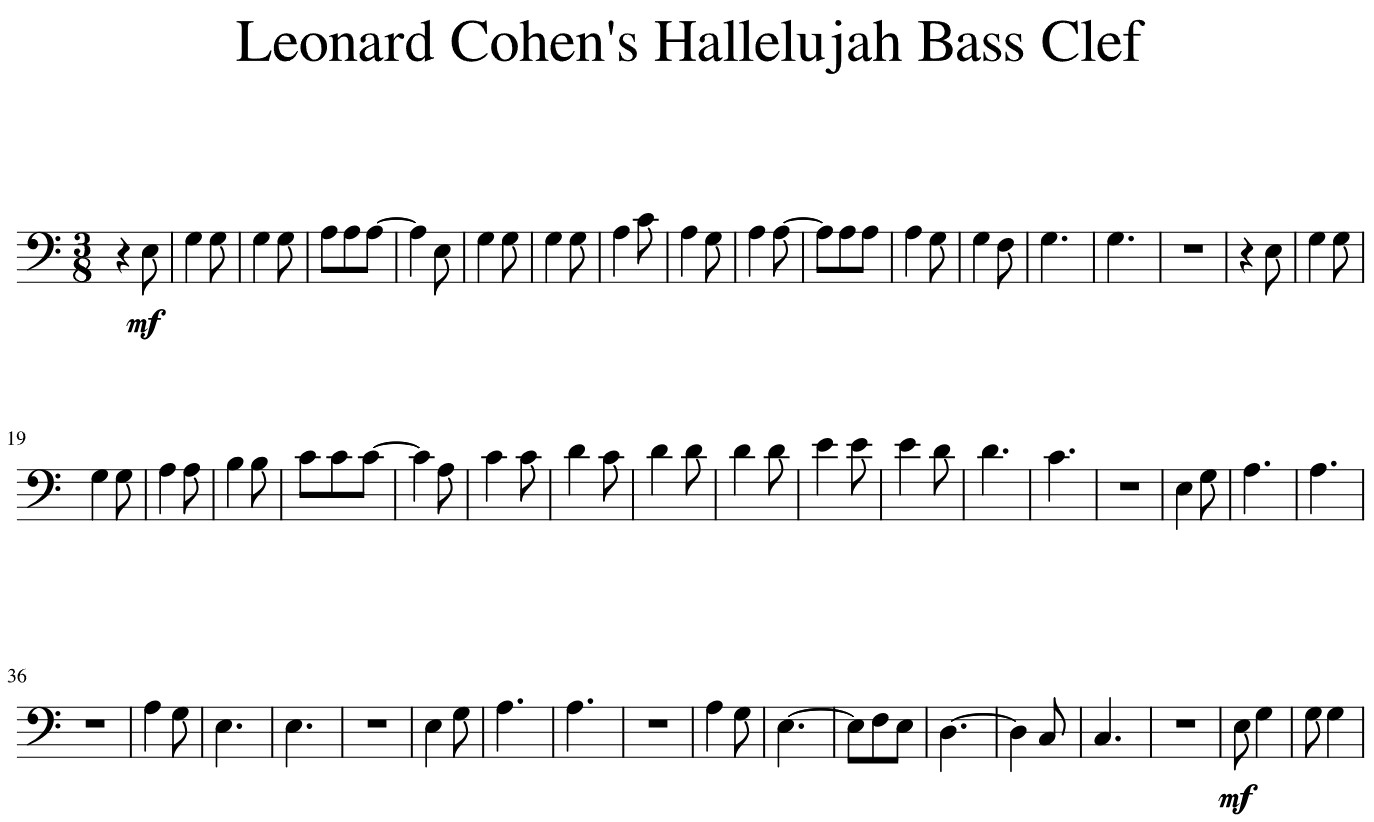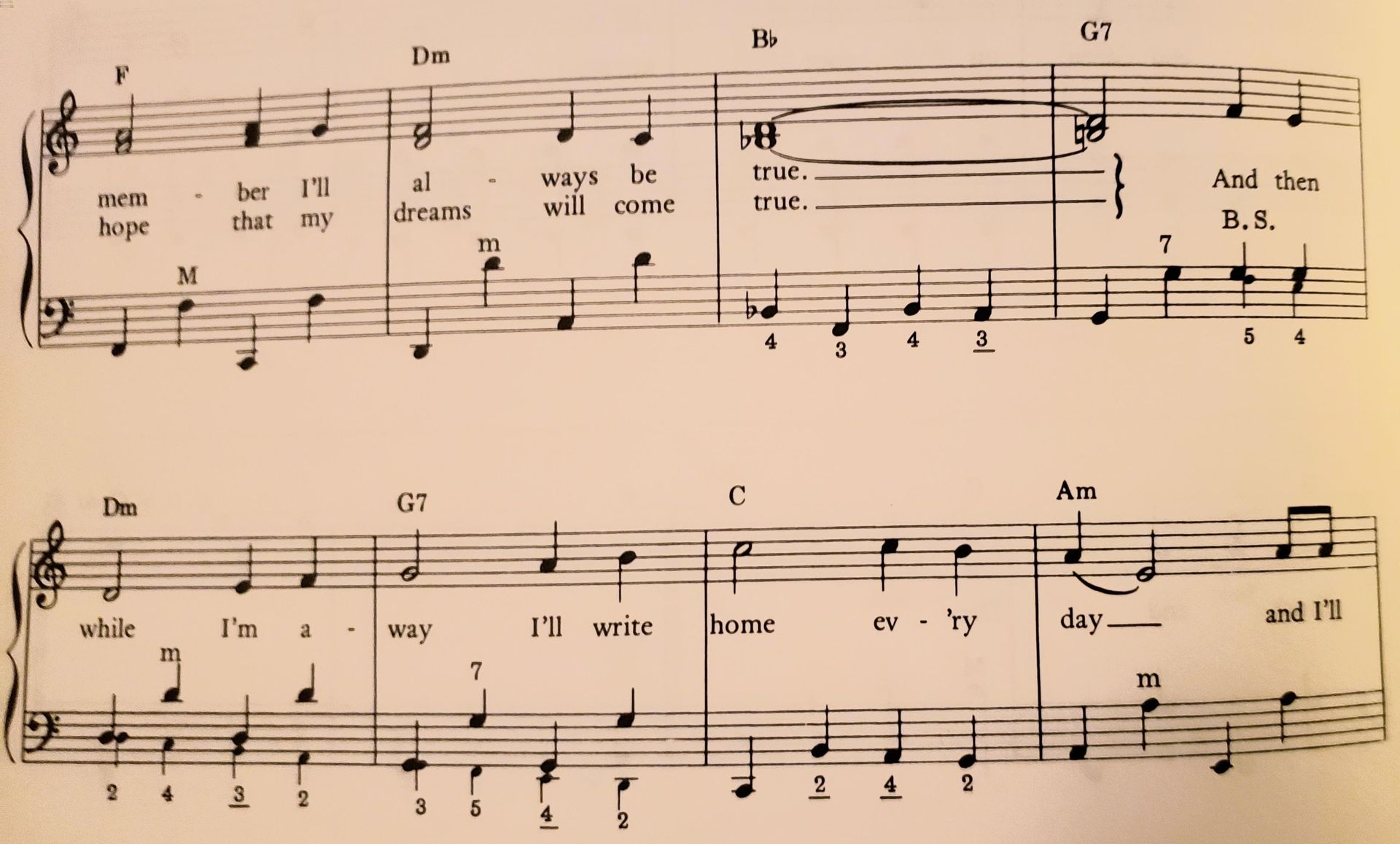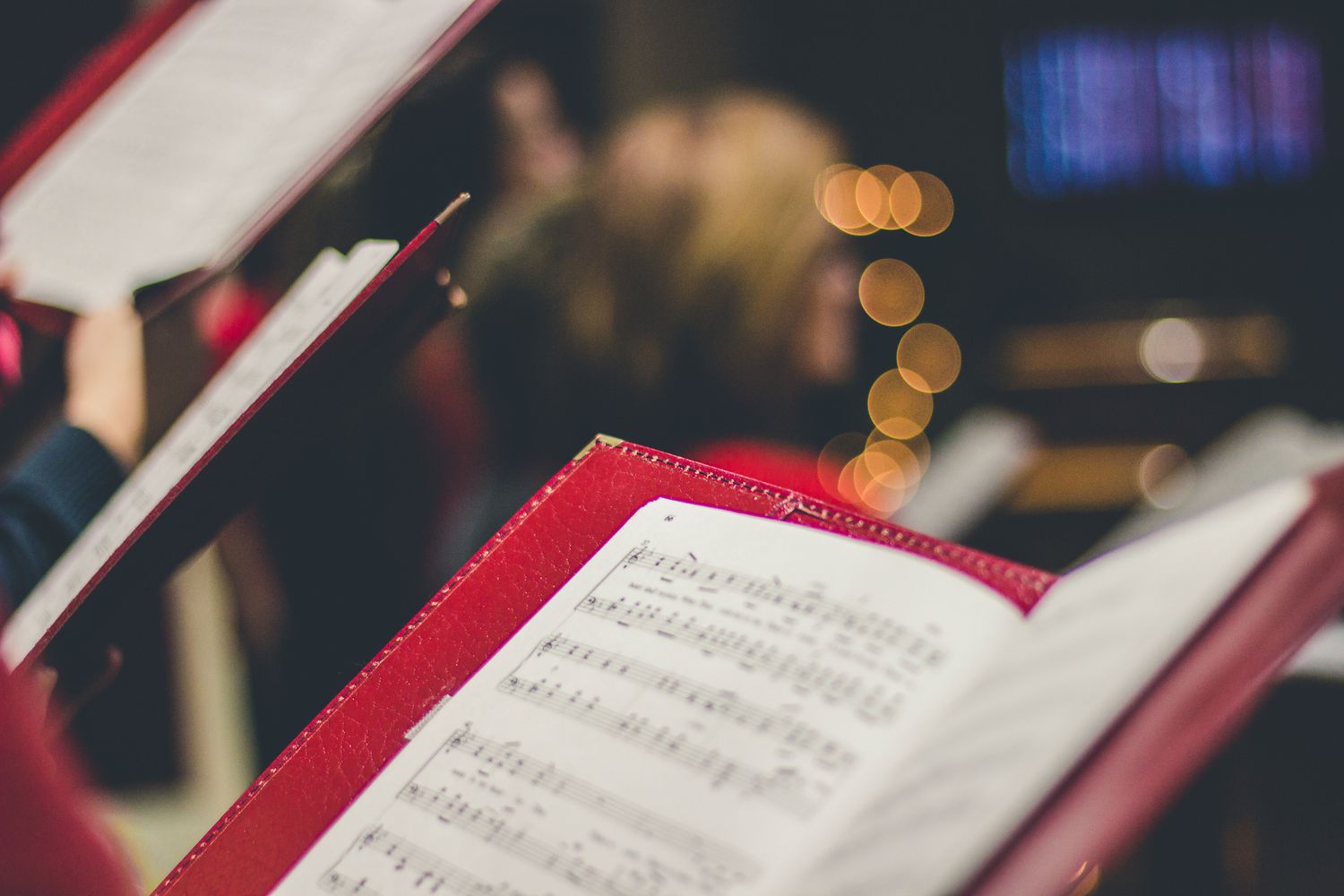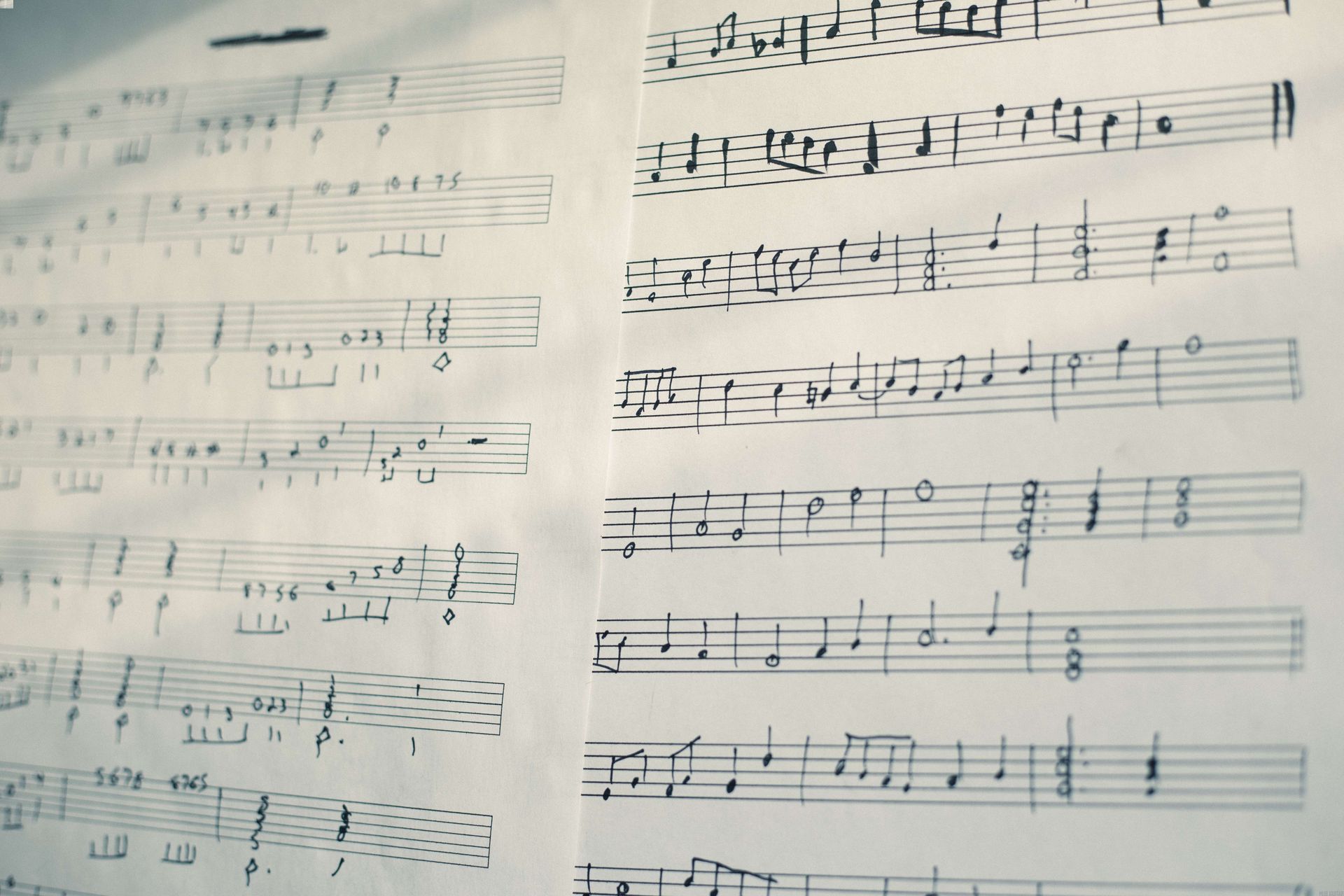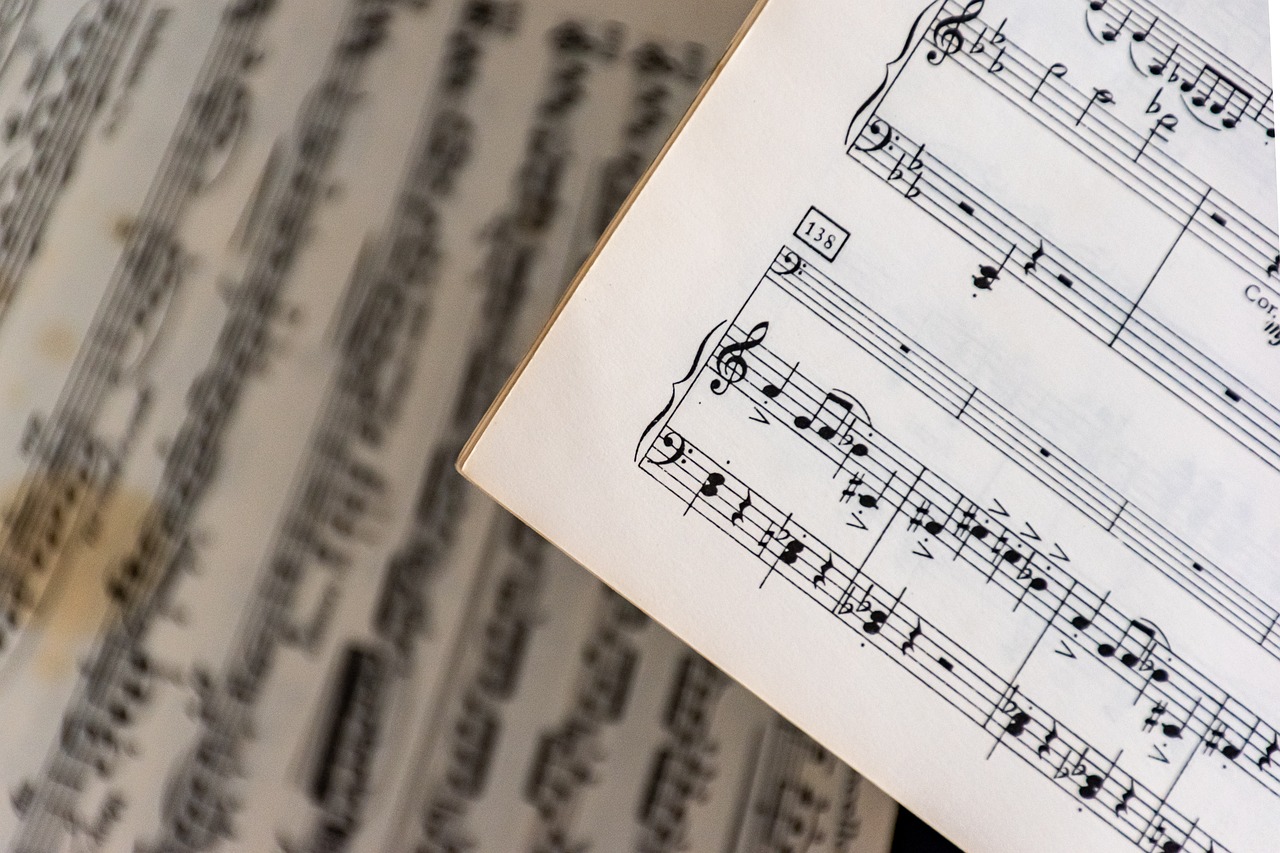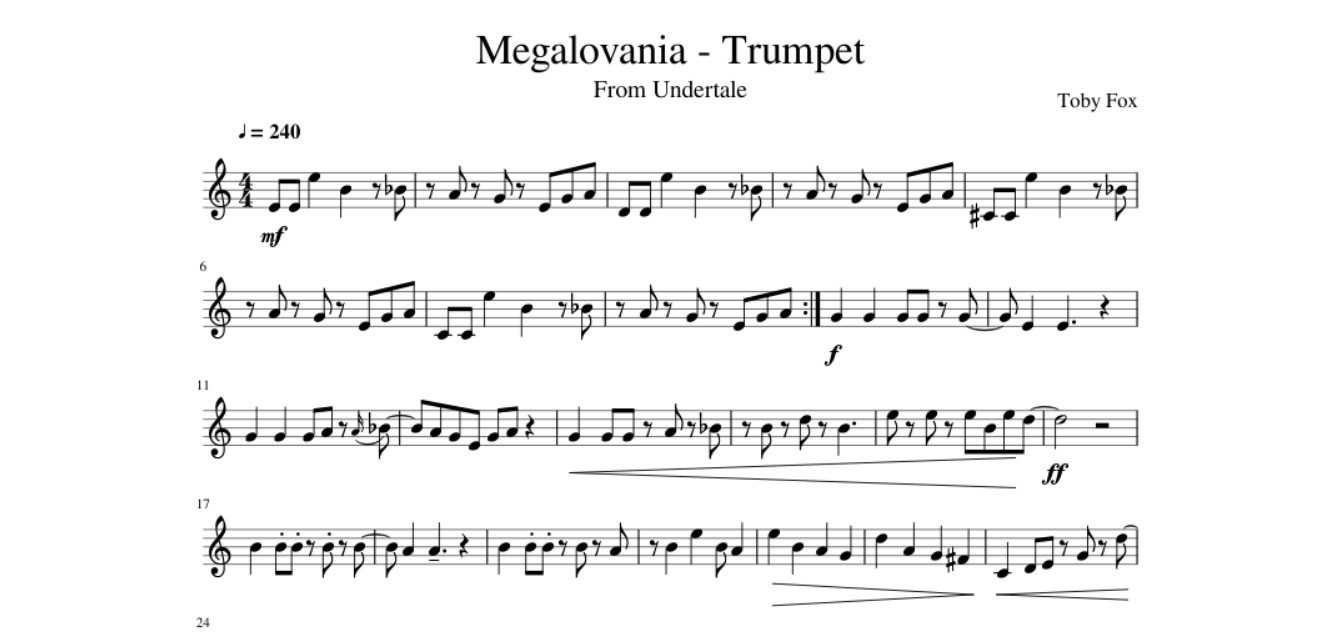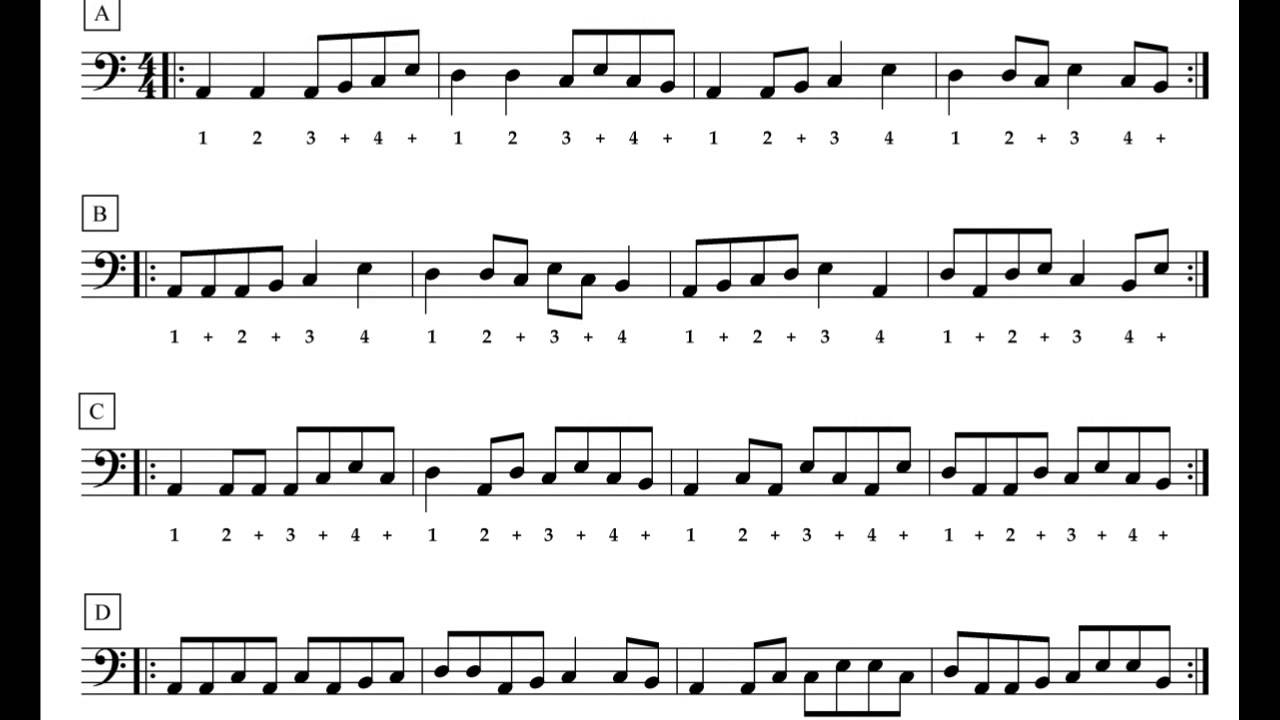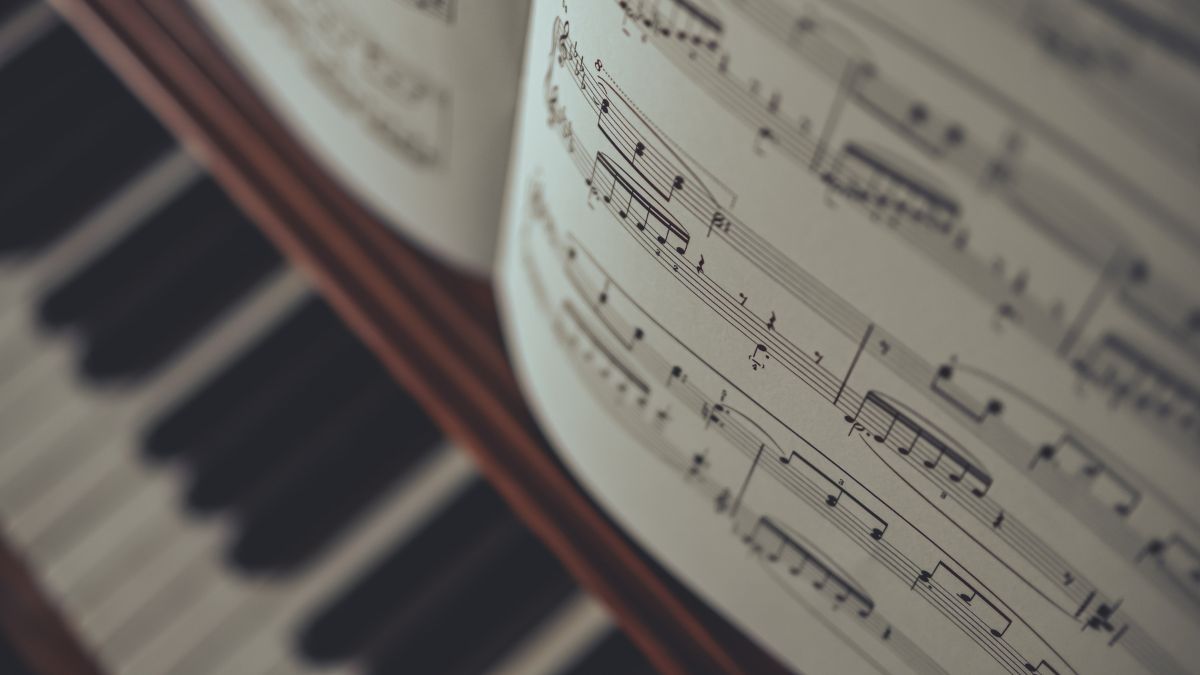Home>Instruments>Guitar>How To Read Music Sheet For Guitar
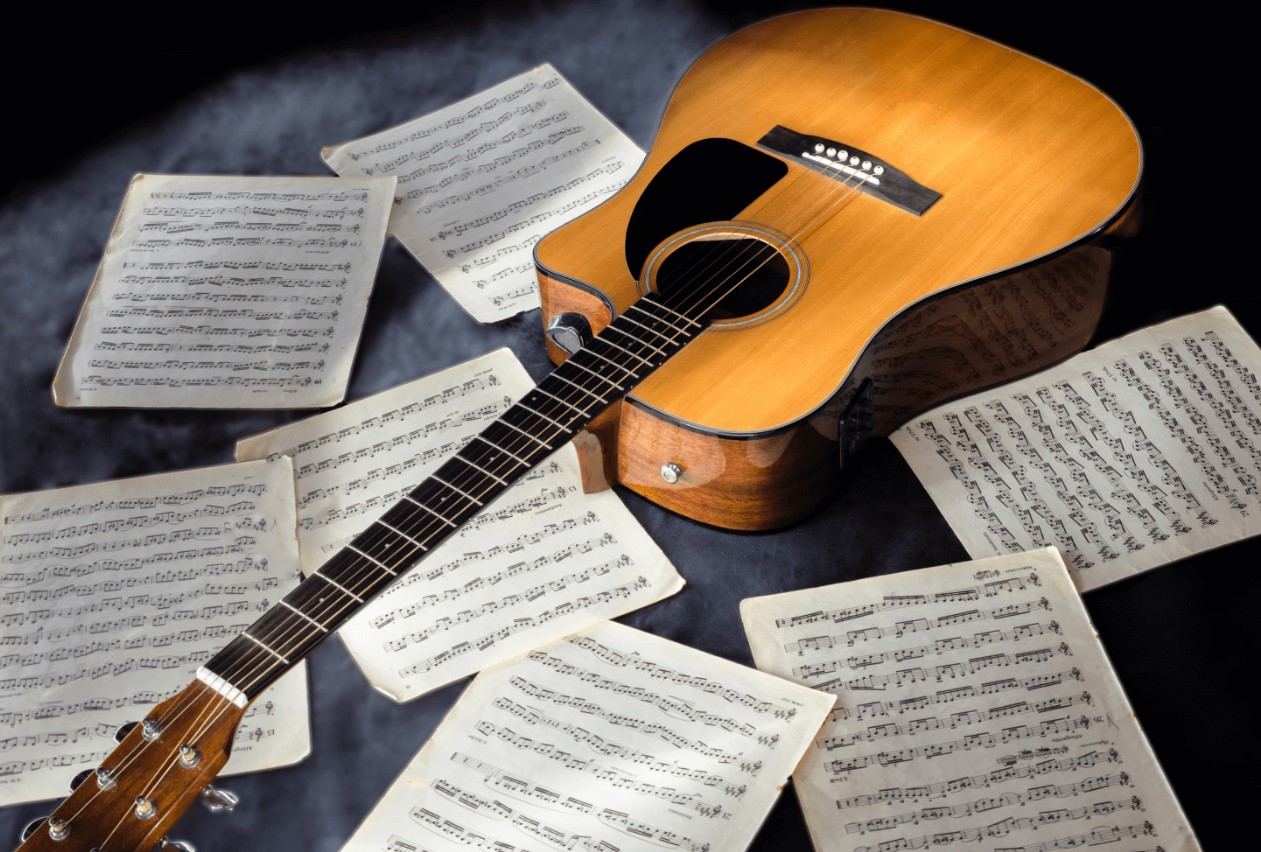

Guitar
How To Read Music Sheet For Guitar
Published: February 14, 2024
Learn how to read music sheets for guitar and improve your playing skills. Master the basics and advance your guitar playing with our comprehensive guide.
(Many of the links in this article redirect to a specific reviewed product. Your purchase of these products through affiliate links helps to generate commission for AudioLover.com, at no extra cost. Learn more)
Table of Contents
Introduction
Learning to read music notation for the guitar is a valuable skill that can significantly enhance your playing abilities. While many guitarists rely solely on tablature, understanding traditional music notation opens up a world of opportunities for expanding your repertoire, collaborating with other musicians, and delving deeper into music theory. In this comprehensive guide, we will explore the fundamentals of reading music sheet for guitar, providing you with the knowledge and tools to confidently interpret and play from standard notation.
Whether you're a beginner or an experienced guitarist, grasping music notation can unlock a wealth of musical possibilities. By understanding the intricacies of staff notation, note values, and rhythmic patterns, you can effectively communicate with other musicians and broaden your musical horizons. Additionally, reading music sheet for guitar allows you to explore a diverse range of musical genres and styles, from classical and jazz to contemporary and world music.
Throughout this guide, we will delve into the essential components of music notation, including the staff, clefs, notes, rhythms, and time signatures. We will also discuss practical strategies for applying music notation to the guitar fretboard, enabling you to seamlessly translate written music into captivating performances. Moreover, we will provide valuable tips and exercises to help you hone your music sheet reading skills and integrate them into your regular practice routine.
By embarking on this journey to master music notation for the guitar, you will not only elevate your playing abilities but also gain a deeper appreciation for the art of music. So, let's dive in and unravel the mysteries of music sheet reading, empowering you to embark on a fulfilling and enriching musical odyssey.
Understanding the Basics of Music Notation
Music notation serves as a universal language for musicians, providing a standardized system for representing pitch, rhythm, and other musical elements. For guitarists, delving into the world of music notation involves familiarizing oneself with the fundamental components of staff notation, including the staff, clefs, notes, and symbols.
At the core of traditional music notation is the staff, a set of five horizontal lines and four spaces that represent different pitches. Each line and space corresponds to a specific note, allowing musicians to visualize and interpret melodies and harmonies. The treble clef, also known as the G clef, is commonly used for notating music for the guitar, indicating the pitch range and positioning of notes on the staff.
Notes are the building blocks of music notation, representing the pitch and duration of sounds. On the staff, notes are positioned either on the lines or in the spaces, with their placement dictating the pitch they convey. Understanding the names and positions of notes on the staff is essential for accurately interpreting and playing music sheet for guitar.
In addition to notes, music notation incorporates various symbols and markings to convey nuances of expression, dynamics, articulation, and tempo. These include symbols such as the treble clef, time signature, key signature, dynamics markings (e.g., piano, forte), articulation marks (e.g., staccato, legato), and tempo indications (e.g., allegro, adagio).
As a guitarist delving into music notation, it’s crucial to familiarize yourself with these basic elements and their functions. By gaining proficiency in interpreting staff notation, you can expand your musical repertoire, collaborate with a diverse range of musicians, and delve deeper into the rich tapestry of musical expression.
As we continue our exploration of music sheet reading for guitar, we will delve further into these fundamental components, providing practical insights and tips to facilitate your journey toward mastering music notation and integrating it seamlessly into your playing.
Learning the Guitar Fretboard
Mastering the guitar fretboard is a pivotal step in understanding and interpreting music notation for the instrument. The fretboard, comprising frets, strings, and corresponding notes, serves as the visual and tactile canvas upon which music comes to life. As a guitarist delving into music sheet reading, developing a deep familiarity with the fretboard is essential for translating written music into captivating performances.
One of the first steps in learning the guitar fretboard is understanding the relationship between notes, frets, and strings. Each fret on the guitar neck represents a specific semitone, allowing you to produce different pitches by pressing the strings against the frets. By familiarizing yourself with the layout of notes on the fretboard, you can effectively navigate the instrument and locate the corresponding positions of notes indicated on the music sheet.
Moreover, gaining fluency in identifying notes and intervals across the fretboard empowers you to play melodies, chords, and scales with precision and confidence. This proficiency is invaluable when reading music sheet for guitar, as it enables you to translate the notated pitches and intervals into tangible movements and sounds on the instrument.
As you embark on the journey of learning the guitar fretboard, consider incorporating exercises and drills to reinforce your knowledge and dexterity. Practicing scale patterns, chord shapes, and note recognition exercises can significantly enhance your familiarity with the fretboard, allowing you to effortlessly navigate its expanse and interpret music notation with ease.
By developing a deep understanding of the guitar fretboard, you will not only elevate your music sheet reading abilities but also expand your improvisational skills, compositional prowess, and overall fluency on the instrument. As we progress through this guide, we will delve further into strategies for integrating music notation with the guitar fretboard, providing you with the tools and insights to seamlessly bridge the gap between written music and expressive guitar playing.
Identifying Notes on the Staff
As a guitarist delving into the realm of music notation, developing the ability to identify notes on the staff is a foundational skill that underpins your capacity to interpret and play written music. The staff, comprising five lines and four spaces, serves as the visual canvas for representing musical pitches, and each note’s position on the staff corresponds to a specific pitch.
At the outset, familiarize yourself with the notes on the lines and spaces of the treble clef staff, which is commonly used for notating music for the guitar. The notes E, G, B, D, and F are represented by the lines, while the spaces between the lines correspond to the notes F, A, C, and E, forming the mnemonic “Every Good Boy Deserves Fudge” for the lines and “FACE” for the spaces.
Understanding the relationship between the notes on the staff and their corresponding pitches on the guitar fretboard is pivotal for seamlessly translating written music into tangible sounds. By internalizing the positions of notes on the staff and their corresponding fretboard locations, you can effectively map out melodies, chords, and harmonies, enriching your musical interpretations and performances.
Moreover, as you delve deeper into music sheet reading for guitar, it’s beneficial to explore the concept of ledger lines, which extend the range of notes beyond the confines of the staff. Ledger lines are used to notate pitches that fall above or below the staff, allowing for the representation of a wide spectrum of musical notes on the guitar.
By honing your ability to identify notes on the staff and associate them with their respective fretboard positions, you will enhance your musical fluency and empower yourself to explore a diverse repertoire of music. As we progress through this guide, we will further elucidate practical strategies for integrating note identification on the staff with the guitar fretboard, enabling you to unlock the full potential of music notation in your guitar playing endeavors.
Reading Rhythms and Time Signatures
Mastering the art of reading rhythms and understanding time signatures is essential for interpreting music sheet for guitar with precision and expressive nuance. Rhythms dictate the duration and timing of notes, while time signatures provide a framework for organizing these rhythmic patterns within a musical composition.
When delving into music notation for guitar, familiarize yourself with the basic rhythmic values, including whole notes, half notes, quarter notes, eighth notes, and sixteenth notes. Each of these note types represents a specific duration, and their combinations form rhythmic patterns that imbue music with movement, energy, and emotive qualities.
Furthermore, understanding time signatures is crucial for grasping the rhythmic structure of a piece of music. Time signatures, typically denoted at the beginning of a musical score, consist of two numbers: the top number indicates the number of beats in each measure, while the bottom number denotes the note value that receives one beat. Common time signatures for guitar music include 4/4 (common time), 3/4 (waltz time), and 6/8 (compound duple time).
As a guitarist immersing yourself in music notation, learning to interpret and internalize rhythmic patterns and time signatures is integral to infusing your performances with dynamic rhythmic phrasing and expressive timing. By honing your rhythmic reading skills, you can breathe life into the notes on the page, imbuing them with a sense of flow, groove, and musicality.
Moreover, as you navigate the intricacies of reading rhythms and time signatures, consider integrating rhythmic exercises and practice routines into your daily regimen. Clapping or tapping out rhythmic patterns, practicing strumming patterns, and analyzing the rhythmic structure of musical pieces can significantly enhance your rhythmic acuity and fluency.
By developing a keen understanding of rhythms and time signatures, you will not only elevate your music sheet reading abilities but also enrich your guitar playing with a heightened sense of rhythmic awareness and interpretive depth. As we progress through this guide, we will delve further into practical strategies for applying rhythmic interpretation to the guitar fretboard, empowering you to infuse your playing with captivating rhythmic nuances and expressive flair.
Applying Music Notation to Guitar Playing
Integrating music notation into your guitar playing opens up a world of creative possibilities and enriches your musical journey with depth and versatility. As you delve into the art of interpreting music sheet for guitar, it’s essential to bridge the gap between the notated symbols on the page and the physical execution on the fretboard, infusing your playing with expressive phrasing and nuanced musicality.
One of the primary steps in applying music notation to guitar playing involves translating the notated pitches, rhythms, and articulations into tangible movements and sounds on the instrument. This process entails mapping out the notes on the staff to their corresponding fretboard positions, understanding the rhythmic patterns, and internalizing the expressive markings and dynamics indicated in the music sheet.
Moreover, as you immerse yourself in music notation for guitar, consider exploring diverse musical genres and styles to broaden your interpretive palette. Whether delving into classical compositions, jazz standards, or contemporary pieces, each genre presents unique opportunities to hone your music sheet reading skills and infuse your playing with stylistic authenticity and emotional resonance.
Additionally, embracing the collaborative aspect of music notation allows you to engage in ensemble playing, where you can contribute to and interpret larger musical works alongside other instrumentalists. Understanding your role within an ensemble, interpreting cues from the conductor or bandleader, and synchronizing your playing with the group dynamics enriches your musical experiences and fosters a deeper sense of musical camaraderie.
As you apply music notation to your guitar playing, consider immersing yourself in diverse repertoire, experimenting with interpretive phrasing, and honing your ability to convey the expressive nuances embedded within the notated music. Embracing the symbiotic relationship between music notation and guitar playing empowers you to unlock the full potential of the instrument, transcending technical proficiency to imbue your performances with artistry and emotive depth.
By seamlessly integrating music notation into your guitar playing, you embark on a transformative journey that transcends the confines of the written page, breathing life into the notes and rhythms, and imbuing your musical expressions with a profound sense of creativity and interpretive prowess.
Tips for Practicing and Improving Music Sheet Reading Skills
Developing proficient music sheet reading skills for guitar requires dedication, patience, and strategic practice approaches. Whether you’re a novice guitarist venturing into the realm of music notation or a seasoned player seeking to enhance your reading abilities, the following tips will aid in refining your music sheet reading skills and nurturing a deeper connection with the instrument.
- Consistent Practice: Dedicate regular practice sessions to reading music sheet for guitar, gradually increasing the complexity of the pieces you tackle. Consistency is key to developing fluency and confidence in interpreting notated music.
- Break It Down: When approaching a new piece of music, break it down into smaller sections, focusing on mastering one segment at a time. This approach fosters a thorough understanding of the musical phrases and facilitates smoother transitions between sections.
- Utilize Sight-Reading Exercises: Engage in sight-reading exercises by exploring unfamiliar musical pieces, challenging yourself to interpret and play them accurately on the guitar. Sight-reading enhances adaptability and expands your repertoire.
- Explore Music Theory: Delve into music theory concepts such as scales, intervals, and chord structures, as they provide a deeper understanding of the underlying principles of music notation, facilitating more informed interpretations of written music.
- Collaborate with Other Musicians: Engage in collaborative music-making experiences with other instrumentalists, where you can exchange insights, interpret ensemble scores, and synchronize your playing within a musical ensemble, fostering a holistic approach to music sheet reading.
- Record and Evaluate: Record your practice sessions and performances, allowing you to review and evaluate your music sheet reading skills objectively. This process offers valuable insights into areas for improvement and facilitates self-assessment.
- Seek Guidance and Feedback: Consult with music educators, instructors, or fellow musicians to seek guidance and constructive feedback on your music sheet reading abilities. External perspectives can offer fresh insights and strategies for improvement.
- Immerse Yourself in Diverse Repertoire: Explore a wide range of musical genres and styles, exposing yourself to diverse repertoire that challenges and enriches your music sheet reading skills while broadening your artistic horizons.
- Embrace Patience and Persistence: Cultivate patience and persistence in your journey to improve music sheet reading skills, recognizing that mastery is a gradual process that unfolds through consistent effort and dedication.
By incorporating these tips into your practice routine and embracing a proactive approach to refining your music sheet reading skills, you can embark on a transformative journey toward becoming a versatile, expressive, and adept guitarist with a profound command of music notation.

